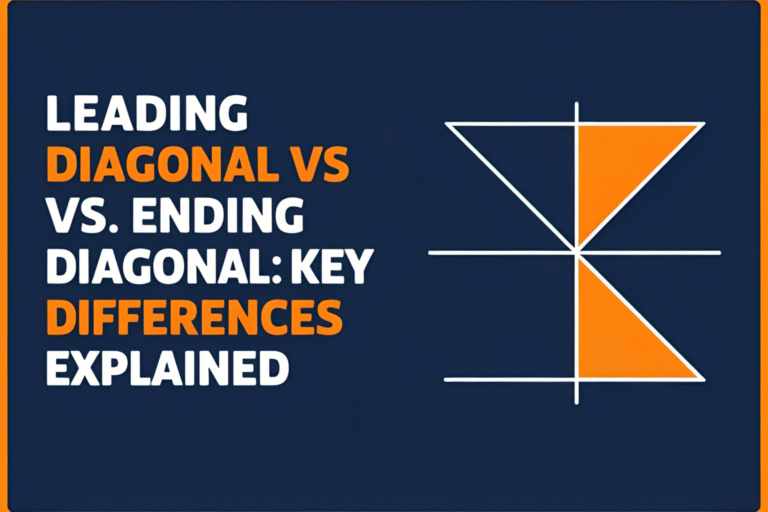How to Identify Corrective Waves (ABC Patterns) in Elliott Wave Theory
Corrective waves are just as important as impulse waves in Elliott Wave Theory. While impulse waves move in the direction of the trend, ABC corrective waves move against it—offering both risk and opportunity for traders.
In this article, you’ll learn how to identify ABC corrective waves, understand their structure, and avoid miscounting them in real-time market analysis.
What Are ABC Corrective Waves?
In Elliott Wave Theory, a correction typically follows a 5-wave impulse move. This correction unfolds in three waves labeled A, B, and C:
- Wave A – A move against the trend
- Wave B – A partial retracement back toward the trend
- Wave C – A continuation of the correction, often mirroring Wave A
These three waves form the basis of zigzags, flats, and triangles, which are the main types of corrective patterns.
Common Structures of ABC Corrections
1. Zigzag (5-3-5)
- A sharp correction
- Wave A: 5 subwaves
- Wave B: 3 subwaves
- Wave C: 5 subwaves
- Pattern is steep and fast
2. Flat (3-3-5)
- A sideways correction
- Wave A: 3 subwaves
- Wave B: 3 subwaves (may go beyond Wave A)
- Wave C: 5 subwaves
- Often occurs in Wave 4 positions
3. Triangle (3-3-3-3-3)
- Five overlapping waves labeled A-B-C-D-E
- Appears during consolidations
- Often seen in Wave B or Wave 4 positions
How to Spot ABC Patterns on Charts
- Start by identifying the end of a 5-wave impulse
- Look for a three-wave correction moving in the opposite direction
- Use Fibonacci retracement levels (38.2%, 50%, or 61.8%) to measure Wave B or C
- Validate with indicators like RSI or MACD for divergence or momentum shifts
Why ABC Patterns Matter in Trading
- ABC waves help identify pullbacks and reversals
- Understanding corrections allows you to hold through volatility in trend trades
- Recognizing ABC patterns early can lead to countertrend opportunities
For example, many traders enter positions at the end of Wave C, anticipating a return to the main trend.
Mistakes to Avoid When Counting Corrective Waves
- Forcing a corrective label on what is actually a developing impulse
- Ignoring volume and momentum, which typically decline during corrections
- Misidentifying a triangle or complex correction as a simple ABC
Always zoom out and check the bigger wave structure before finalizing your count.
Conclusion
ABC corrective waves are a key component of Elliott Wave Theory. By understanding their shape and sequence, traders can avoid false entries and better anticipate market behavior during trend pauses.
Learning to recognize zigzags, flats, and triangles will strengthen your technical analysis and help you navigate both trending and choppy markets.
FAQs
What is the purpose of ABC waves?
They represent a market correction against the primary trend after a 5-wave impulse.
Are corrective waves always three waves?
Most standard corrections are ABC, but complex corrections can include more segments.
Can Wave C be longer than Wave A?
Yes, especially in strong corrections. Wave C often equals or exceeds Wave A in length.
How do you confirm an ABC correction is complete?
Look for reversal signals at Fibonacci levels and the start of a new impulse pattern.
Where do ABC corrections typically occur?
They follow a completed impulse, often in Wave 2 or Wave 4 positions.





